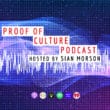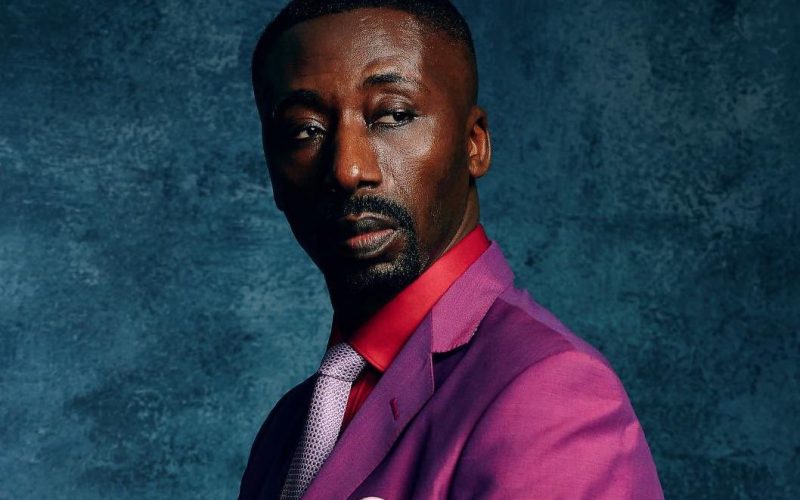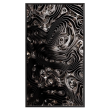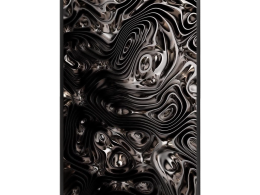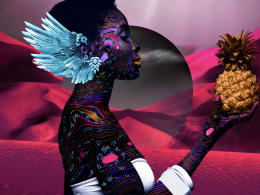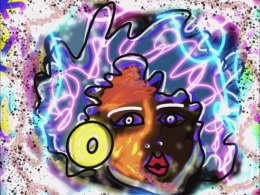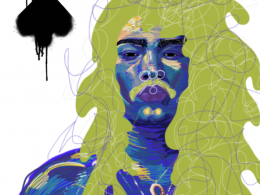If you’ve spent any time with the crypto art community on Twitter, in Discord groups, or with NFTs.tips on Clubhouse, you’re probably already at least visibly familiar with “Q“, an active NFT art collector with dark skin, a polite English accent, and a notorious purple suit.
Q is an ever-present figure and a leading voice in NFT artist circles. He also manages a growing portfolio of art on the blockchain for QClubb; a 5-member group of international NFT collectors known as NFT Aficionado. In addition to intellectual property and asset acquisition, their long-term goal is to establish an agency to work directly with artists, brands, and charities to commission works of art and curate art experiences for philanthropic causes.
You seem to have appeared out of nowhere Q, and here you are.
I came to this space, not knowing what I’m doing. I still say I don’t know what I’m doing. It keeps me on my toes. Because when you get to the point where you think you know everything, you’re gonna start making mistakes. We got in about 3 months ago when Ethereum was “low,” so theoretically, when it goes up, our portfolio goes up.
So you appeared in a Clubhouse room, heard about NFTs, and you started buying?
I was just there supporting a friend. I didn’t have any ethereum, I didn’t have a wallet—I didn’t even know what a Metamask wallet was. But one of Clintn Lord‘s friends had all of that. So I transferred fiat money from my Cashapp to his and I put up a bid on the piece that way, and I ended up winning. I started talking to my business partners about NFTs. The process of finding out about NFTs and the process of “Q” as a brand are 2 different things. I had to work it out, and I’m still working it out, how to balance those things.

What can you tell me about your group of collectors?
We’re all people of colour. My main business partner is Candice Vetter. I’ve known her for a long time, and we’ve done a lot of business before. I come from a real estate background in terms of acquiring real estate, developing real estate, and finding real estate for clients. After helping her acquire and build up her portfolio, she had a level of trust in me.
This is what the crypto space is all about. Trust. Familiarity. Removing fear and doubt.
The one question she had for me was, where is this NFT? So we sat down and decided to do a test for ourselves first, and then involve some other investors that we’ve worked with before, and bring them onto the team. We missed out on Bitcoin; are we going to miss out on Ethereum and the whole crypto buzz? If we miss out on this crypto buzz, are we going to miss out on the NFT buzz too? We decided that NFTs are going to be our gateway to crypto, because it’s going to be people like us who come from the fiat world that will make this market grow. So we used ourselves as a test case. We didn’t understand crypto, but I do understand art, fashion, music, books… I understand taste.
You’re a tastemaker, so the purple suit–well, it suits you.
When I started on Clubhouse, I used to go into the business executive rooms. They taught me very early about the value of having a good avatar in order to stand out when people are looking at these avatars. If you’ve got some color, it’ll help you stand out. They said always introduce yourself, and then when you’re done speaking, say you’re done speaking, so when I came into the NFT rooms, I would say, “Hi I’m Q in the purple suit,” and the branding all happened by chance. What I realized was that being a person of color in a space that was predominately white, everything I did had an echo effect to it—so I gamified my existence with my purple suit. There’s lots of black collectors in this space who aren’t as visible as I am. I became visible by default, because of my purple suit.
You also show up. Not just to talk about yourself, but to nurture and mentor artists. There’s nothing pretentious about you.
Like everybody else, I came into Clubhouse with zero followers, but I also didn’t have anybody to migrate from Facebook or Twitter or any other social media. I’ve been off social media for 5 or 6 years. If I walk into a nightclub, and I don’t knowing anybody, the first place I’m going to go to is the bar, and I’m going to buy myself a drink, and I might buy someone I’m having a conversation with a drink. That generous approach was the first stage.
That’s a great analogy for meeting artists.
It’s an interesting thing about this space. Why do they like Q in the purple suit? Why do they make busts? If I go in a hic et nunc room, they all change their avatars to my avatar. Is it because of my English accent? Do they see past my blackness?
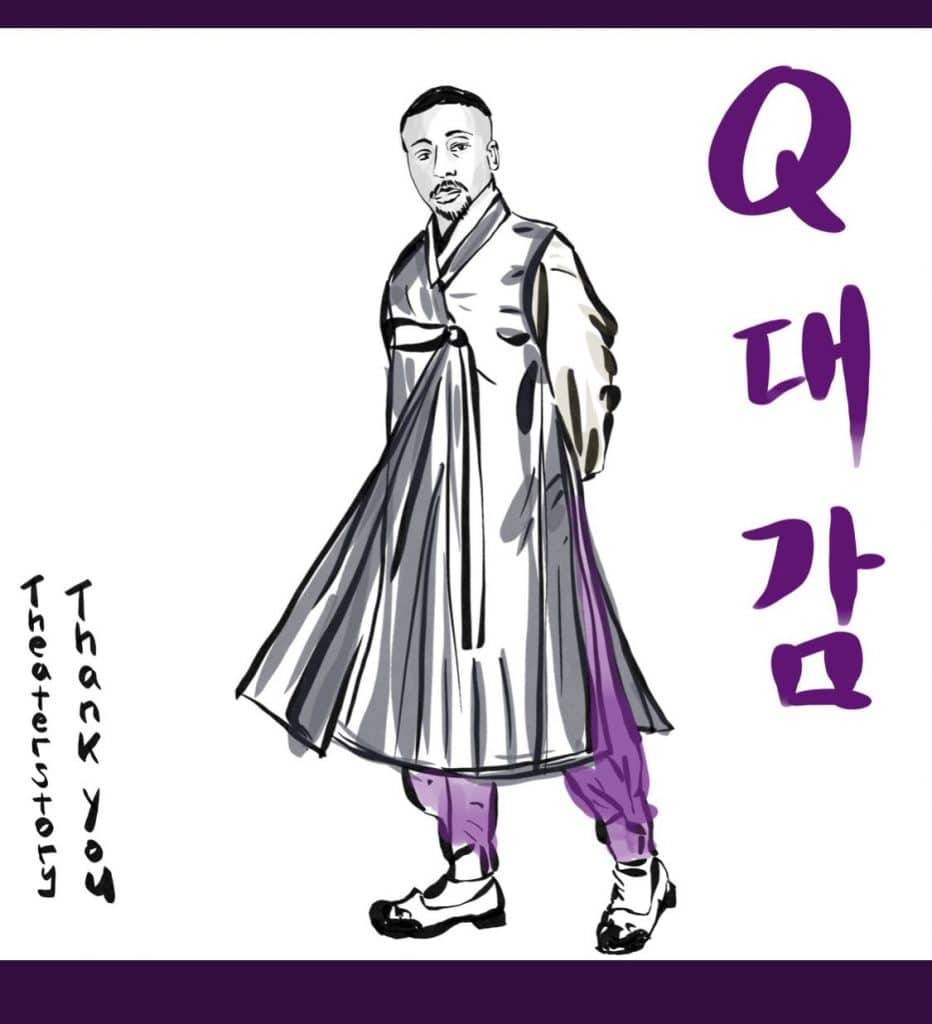
All of the above. And most importantly, because you’re collecting. How do you know what to buy?
You have to identify the art that you want to acquire. We made a few mistakes because this is a new business model with the flipping, the collectibles, the attention. Even the racism. Because even though we own the iconic Public Enemy logo NFT, would Christie’s ever put that up, from us, because we’re visible—and get the best price? What are their perceptions about a black collector? Would they want us to get 100 Etherium if they knew the crypto was going to a team of black collectors?
As you know from real estate, black homeowners face discrimination in appraisals. Here in America, it was recently determined that this devaluation costs black homeowners $156 billion in cumulative losses.
The same thing that’s happening with Jay-Z and Jack Dorsey. What’s that about? That’s providing a valuation for Tidal. Then Jay-Z changed his avatar to a Cyberpunk. Because it ain’t cool unless we’re collecting it. It ain’t cool unless we’re wearing it. It ain’t cool unless we’re making the music, and it ain’t cool unless we’re dancing to it. So they see me and they see some coolness, but I’m savvy with what I’m doing too.
And it looks like you’re doing it right because there’s a lot of eyeballs on you right now, and they’re all staring at your digital wallet–for the crypto you have to spend, and the art you’ve already spent crypto on. Do you spend time looking at other wallet addresses?
“If you’re a collector, and you’re not looking at other people’s wallets. How would you learn and see what’s going on in the market? You’re looking at the activity of certain artists; you can see their activity, and what they’re minting. You can also see who’s buying, and at what price, because you have to know the comparables right? Like real estate. You have to know whether you’re getting something above value or undervalued, so you have to look at whale collectors’ wallets and see what they’ve got. But you also have to be careful, because people Airdrop art into their wallets that the whales didn’t actually buy.
Good point. And with your popularity, I’m sure it’s happening to you–especially because you’re much more visible than most collectors.
Well it seems the purple suit took on a life of its own and has become symbol of many things to the community. Black people and black culture have worked because of community. Now how do you build a community within a community?
Tell me about your Purple Suit Collection?
Candice from my team collaborated with Artz and Jonathan Foley on this project. She wrote a story to go with it, which Artz turned into a song. The purple suit collection was Artz’ idea; we talked about it in relation to the song, in relation to the story that went with the original bust, and in relation to Nana Yaa Asantewaa. More importantly to art, so we decided to get artists to put images together to go with the song for Juneteenth. That was how the purple suit collection was born. Now the NFT community wants it to continue, with more artists contributing to the collection going forward.
Do you market and promote your acquisitions?
Every collector in this space might be going about it the wrong way. You can look in our wallets. You can see what we’ve got. The galleries aren’t there, so part of our job is to promote that artist. We become the virtual gallery and talk about it. We’re not posting to brag, we’re marketing. When we spend the money, we have to create some attention.
What if, in your lifetime, none of these NFT assets you collect retain the value that you envision them to possess? Are you prepared to leave a portfolio of wealth behind if or when you pass away, or do you anticipate that crypto art will have a profound economic impact in your lifetime?
I wrestle with this question every day. Because how can we as collectors win, when the whole industry has changed in favor of the artist? So our strategy is, we’re either going to make crypto from commercial companies and brands, or we’re going to make crypto from the new people coming into the space by facilitating courses, authoring books, whatever it is—seminars like Gary Vee. We’re becoming authorities in this market by doing what we’re doing; we’re changing the face of of the stereotypical global perception of black people. Just like Jay Z does in his own way, but in the crypto space. As other like-minded collectors come in, we’ll start to form DAOs and bigger funding bodies to HODL this art in our own vaults so we can raise capital on it. With a house, or a real estate portfolio, you can leave those assets to the next generation—it’s there. As much as NFT art benefits the artist, if we do it the right way, it will benefit us too.
“Each One, Teach One” is an African proverb that originated during slavery when Africans were denied education. Slaves were kept in a state of ignorance about anything beyond their immediate circumstances, so if an African slave learned to read or write, it became their responsibility to teach someone else. The idea is to spread knowledge for the betterment of your community.
Like Public Enemy for example. We acquired their iconic, animated, digital logo for 3.3 Ethereum. Does it have value? You tell me. I believe it does, and we’re also making history by immortalizing history. The blockchain ensures that history can’t be wiped out or rewritten anymore. So Q’s brand story and Public Enemy are now symbiotically linked together on the blockchain.
That’s noteworthy. Congratulations.
Chuck D messages me. We have a kind of digital communication, and he knows because I’ve told him that I’m just the custodian of this nostalgic art for the period of time that I have it. All we’re gonna try and do, just like with real estate, is fight the system; fight the power to raise the value of these assets. And when it comes out of our custodianship to the next collector, and the artist gets their royalty, we would love to be able to be in a position to auction at Christie’s or Sotheby‘s for Chuck D’s legacy and for the culture.
Where can we view your Art Aficionado collection?
We don’t see much value at present in VR galleries. Currently there’s a whole lot of artists and not enough collectors. If there were lots more collectors, we’d have a reason to create a robust virtual art gallery, but right now, the only virtual gallery we maintain for the public is Tryshowtime, which also offers a quality experience.

